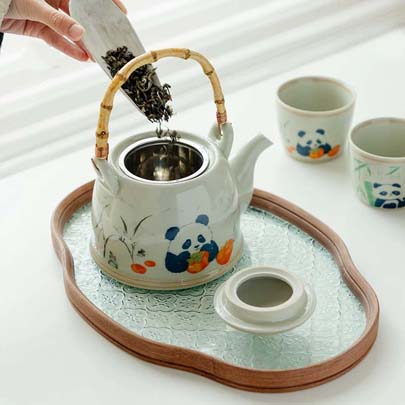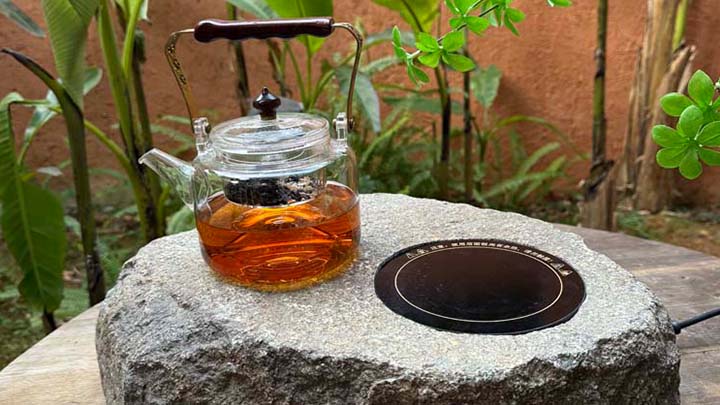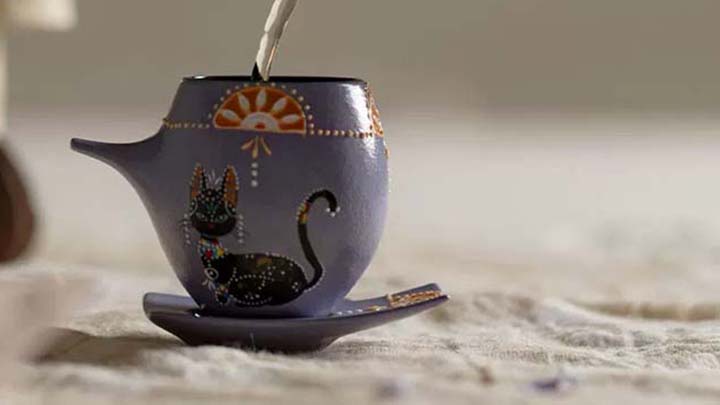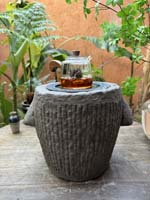Differences Between Chinese Gongfu Tea Sets and Overseas Tea Cultures
Tea culture is a significant part of many civilizations, with each region developing its unique styles of tea preparation, tools, and etiquette. Among them, Chinese Gongfu tea sets stand out for their intricate design and meticulous brewing process. However, overseas tea cultures, such as those in Japan, the United Kingdom, and the Middle East, also have distinct characteristics. This article explores the differences between Chinese Gongfu tea sets and tea cultures around the world.
1. The Essence of Chinese Gongfu Tea Sets
Chinese Gongfu tea culture emphasizes precision, artistry, and appreciation of tea’s full flavor profile. Key features include:
Small Yixing Clay Teapots: Porous clay teapots that absorb the essence of tea over time, enhancing flavor with repeated use.
Gaiwan (Lidded Bowl): A versatile brewing vessel used to steep tea with precision and control.
Multiple Small Cups: Gongfu tea is served in small cups to allow tasting over multiple infusions.
Tea Tray and Drainage System: A specialized tea tray with water drainage to handle spills and rinsing during the tea ceremony.
Precision Brewing Techniques: Requires specific water temperatures, short steeping times, and multiple infusions to extract the best flavors.
2. Overseas Tea Cultures and Their Unique Features
Each region has distinct tea-drinking traditions and utensils, shaped by history and social customs.
a. Japanese Tea Ceremony (Sadō)
Matcha and Chawan: Japan’s tea culture is rooted in Zen Buddhism, focusing on powdered green tea (matcha) whisked in a bowl (chawan).
Chasen (Bamboo Whisk): Used to create a frothy, smooth consistency in matcha.
Tea Ceremony Rituals: Highly formalized with strict etiquette, emphasizing mindfulness and aesthetics.
b. British Afternoon Tea
Porcelain Teapots and Cups: Typically larger than Chinese Gongfu tea sets, used for brewing black teas such as Earl Grey and Darjeeling.
Milk and Sugar Additions: Unlike Gongfu tea, British tea is often served with milk, sugar, or lemon.
Tea Stands and Pastries: Accompanied by scones, finger sandwiches, and cakes, forming a social tradition.
c. Middle Eastern and Turkish Tea Culture
Samovar and Tulip Glasses: Tea is brewed in a two-tiered metal teapot system (samovar) and served in small, curved glasses.
Strong, Sweet Tea: Often heavily sweetened, sometimes infused with spices like cardamom.
Social and Hospitality Significance: Tea is central to hospitality and gatherings.
d. Indian Chai Culture
Masala Chai and Clay Cups (Kulhad): Spiced tea brewed with milk and sugar, traditionally served in clay cups.
Boiled Preparation Method: Unlike Gongfu tea, Indian chai is boiled with spices like ginger, cinnamon, and cloves.
Street Vendors (Chaiwalas): Tea is an integral part of daily life, served in bustling markets and streets.
Conclusion
While Chinese Gongfu tea culture is known for its precision and artistry, other global tea cultures bring their own unique elements to tea preparation and enjoyment. Whether it’s the ritualistic Japanese tea ceremony, the elegant British afternoon tea, or the communal Turkish tea gatherings, each culture has developed its own deep appreciation for tea. Understanding these differences enhances our appreciation of tea as a universal yet diverse tradition




